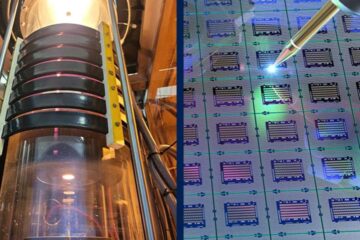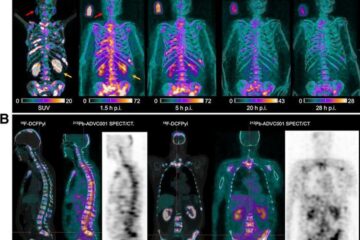Experiments reveal startling insights into lemur intelligence

Such research could offer important evolutionary insights into the nature of intelligence in primates
Until now, primatologists believed lemurs to be primitive, ancient offshoots of the primate family tree, with far less intelligence than their more sophisticated cousins, monkeys, apes and humans. But at the Duke University Primate Center, with the gentle touch of his nose to a computer screen, the ringtail lemur called Aristides is teaching psychologist Elizabeth Brannon a startling scientific lesson — that lemurs are, indeed, intelligent creatures.
Brannon is using touch-screens, Plexiglas boxes holding raisins and buckets hiding grapes to establish that ringtails such as Aristides and his mongoose lemur cousins possess a surprising ability to learn sequences of pictures and to discriminate quantities. While Brannon’s work is still only at a preliminary stage, its initial results lead her to believe that such studies could mark the dawning of a new appreciation of lemur intelligence.
Such research could offer important evolutionary insights into the nature of intelligence in primates, Brannon said, since lemurs are living models for the ancient primate mind. “Prosimians,” including lemurs and related species split off from the primate line some 55 million years ago, evolving independently from the line that led to anthropoids and humans.
“One of the main threads of my research has been to understand how the human mind became so sophisticated numerically,” said Brannon, who is an assistant professor of psychological and brain sciences and a member of Duke’s Center for Cognitive Neuroscience. “A big issue is whether primates have specific adaptations for such cognitive abilities that differ from other animals. And prosimians are a great model for these basal primate adaptations.”
Brannon admits that she began her studies of lemurs — supported by funds from the Primate Center — with little hope of success. For one thing, lemurs show little of the sophisticated perceptual abilities, curiosity and interest in manipulation that would indicate that they would actively participate in experiments.
“The little bit of research that’s out there suggests their learning capacities are not as sophisticated as those of monkeys,” said Brannon. “So initially, I thought it very unlikely that I was going to get any cognitive experiments to really work with them.”
For example, she said, studies of ringtail social groups show that even though the animals interact with one another, they don’t seem to have as much knowledge of social relationships between the other animals in their groups, compared with monkeys and apes.
But the lemurs surprised her. When she and her undergraduate student researchers began to offer ringtails the chance to use a touch-screen to recognize images for a sugar-lump reward, the animals — literally — jumped at the chance.
“The ringtails live in social groups, which could be distracting, and they’re completely free to just ignore us and the apparatus. But despite these possible complications, we found they would completely voluntarily come over to the screen and participate.”
Sometimes, the lemurs even competed with one another. “Occasionally, one animal would come over and finish the sequence started by another to get the reward,” said Brannon.
Unlike monkeys and apes, who will explore objects out of curiosity, lemurs only work for food, said Brannon. But they will work. “If a task involves a food reward, they can be amazing,” she said. “They’ll work for a couple of hundred trials because they want these sugar pellets, even though we do not deprive them of food in any way.”
The touch-screen studies have involved asking the animal to remember the order of appearance of random images by touching them in order when they reappear as a group. So far, Brannon and her students have found that the animals do show a systematic learning ability, decreasing the time it takes them to learn the order of successive sets of images.
“This is a capability that pioneering primatologist Harry Harlow termed ’learning to learn,’” said Brannon. “It shows that the animal is actually learning some kind of strategy above and beyond what they’re learning about the individual pictures in a given set.”
The animals do show a difference in interaction with the screen that reflects their more primitive ability to manipulate objects with their hands, said Brannon. “While monkeys will use their fingers, the ringtails use their nose or mouth to touch the screen, sometimes kind of kissing it.”
In another experiment that explored lemurs’ numerical ability, Brannon and her students presented animals with a two-trayed box containing different numbers of tasty raisins or grapes in each tray. The animals were allowed to access only one of the trays. While the animals did show an ability to recognize larger quantities, found the researchers, they were not mathematical geniuses.
“We found that the lemurs were generally motivated to choose the larger quantities, but they didn’t show a huge bias in favor of the larger amount,” said Brannon. “In fact, when the two quantities were very close in number, they aren’t too good at choosing the larger one — but this general pattern of increasing performance as the difference between the two quantities increases is exactly what we see in rhesus monkeys and a wide range of other animals.”
In another pilot study, in collaboration with postdoctoral research associate Kerrie Lewis, the researchers tested whether mongoose lemurs would search longer for two grapes hidden in a bucket after they’d seen two go in compared with when they’d only seen one go in. “We’re using their search time as a measure of whether they’ve perceived the number of food items that have actually gone into the bucket,” said Brannon. So far, she said, it does appear that the lemurs recognize the difference between one and two grapes going into the bucket.
All of the lemur studies represent only the tantalizing beginning of a promising new research pathway, said Brannon.
“We’ve only been studying ringtails and mongoose lemurs so far,” she said. “But our hope is to study many different prosimian species at the Primate Center, taking advantage of the fact that the center has so many different species with such an incredible diversity in sociality and ecology.
“For example, ringtail lemurs are probably the most social of the prosimians. And we’re interested in whether such social structure may have selected for certain kinds of numerical or other conceptual abilities,” she said.
“Our broad goal is to determine whether there are any significant differences in numerical cognition among different prosimian species and then trying to correlate those differences with some aspect of their social structure or their ecological niche,” said Brannon.
Media Contact
More Information:
http://www.dukenews.duke.edu/news/experiment_0504.htmlAll latest news from the category: Life Sciences and Chemistry
Articles and reports from the Life Sciences and chemistry area deal with applied and basic research into modern biology, chemistry and human medicine.
Valuable information can be found on a range of life sciences fields including bacteriology, biochemistry, bionics, bioinformatics, biophysics, biotechnology, genetics, geobotany, human biology, marine biology, microbiology, molecular biology, cellular biology, zoology, bioinorganic chemistry, microchemistry and environmental chemistry.
Newest articles

Silicon Carbide Innovation Alliance to drive industrial-scale semiconductor work
Known for its ability to withstand extreme environments and high voltages, silicon carbide (SiC) is a semiconducting material made up of silicon and carbon atoms arranged into crystals that is…

New SPECT/CT technique shows impressive biomarker identification
…offers increased access for prostate cancer patients. A novel SPECT/CT acquisition method can accurately detect radiopharmaceutical biodistribution in a convenient manner for prostate cancer patients, opening the door for more…

How 3D printers can give robots a soft touch
Soft skin coverings and touch sensors have emerged as a promising feature for robots that are both safer and more intuitive for human interaction, but they are expensive and difficult…





















